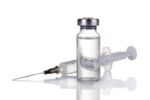Fundamentos e objetivos: Em estudos recentes sobre intervenção coronária percutânea primária (PPCI), a bivalirudina em comparação com a heparina tem sido associada ao aumento do risco de trombose de stent (ST), com taxas relatadas de ST muito variáveis. O objetivo deste estudo foi descrever a incidência de “mundo real” e os resultados de ST definitiva,<a href="https://solaci.org/en/2015/06/24/taxas-de-trombose-de-stent-em-pacientes-com-stemi-2/" title="Read more" >...</a>
HEAT PPCI: Bivalirudin raises major cardiac events and does not reduce bleeding. The most controversial and criticized study at the ACC 14.
This randomized trial of a single center with consent obtained after randomization compared the use of bivalirudin versus heparin with the use of glycoprotein inhibitors arescue only in patients having ST segment elevation myocardial infarction.The primary efficacy endpoint was a composite of death, stroke, and myocardial revascularization of the target lesion and the primary safety<a href="https://solaci.org/en/2015/06/24/heat-ppci-bivalirudin-raises-major-cardiac-events-and-does-not-reduce-bleeding-the-most-controversial-and-criticized-study-at-the-acc-14/" title="Read more" >...</a>
FAST MI: AMI improved the survival associated with the clinical characteristics changes of patients in the French National Registry.
Presentation Summary: The French National Registry included patients admitted with acute myocardial infarction between 1995 and 2010 (n = 6707). Over time, authors noted a reduction in the age of presentation, especially in women under 60 years with increased incidence of smoking and obesity. Pain-center time was significantly reduced, while increasing the number of patients<a href="https://solaci.org/en/2015/06/24/fast-mi-ami-improved-the-survival-associated-with-the-clinical-characteristics-changes-of-patients-in-the-french-national-registry/" title="Read more" >...</a>
XIMA: Randomized prospective study comparing everolimus eluting stents versus conventional stent implantation in octogenarians.
Background: Octogenarian patients represent an increasingly growing population. In addition, this age group has a higher proportion of co-morbidities with more extensive and complex coronary disease. However, they have often been excluded from major studies, whose average age is usually 60 years. Despite having a more complex coronary anatomy, the role of pharmacological stent (DES)<a href="https://solaci.org/en/2015/06/24/xima-randomized-prospective-study-comparing-everolimus-eluting-stents-versus-conventional-stent-implantation-in-octogenarians/" title="Read more" >...</a>
EUROMAX: Bivalirudin during transport to primary angioplasty
The HORIZONS AMI trial showed the usefulness of bivalirudin in reducing mortality and bleeding compared with the use of heparin plus glycoprotein IIBIIIA. However, some questions remained unanswered: What is the utility of starting the infusion during the ambulance journey? Is it possible to reduce the risk of acute thrombosis by extending bivalirudin infusion or<a href="https://solaci.org/en/2015/06/24/euromax-bivalirudin-during-transport-to-primary-angioplasty/" title="Read more" >...</a>
EUROMAX: Early and prolonged infusion of bivalirudin reduces mortality in AMI
Bivalirudin reduced mortality and bleeding compared to heparin and glycoprotein IIbIIIa in HORIZONS- AMI study. However there was a higher rate of acute stent thrombosis in patients receiving bivalirudin. This randomized study (> 90 % randomized in the ambulance) enrolled 2218 patients with ASTEMIto prolonged infusion of bivalirudin compared with heparin -associated glycoprotein inhibitors. The<a href="https://solaci.org/en/2015/06/24/euromax-early-and-prolonged-infusion-of-bivalirudin-reduces-mortality-in-ami/" title="Read more" >...</a>
Hokusai-VTE: Endoxaban shows solid results versus warfarin in venous thromboembolism .
The venous thromboembolism is the third most common cardiovascular disease after acute myocardial infarction and stroke . Usual treatment is to use low molecular weight heparin followed by vitamin K antagonists Other studies have shown that the new oral anticoagulants with or without initial heparin are effective alternatives. The endoxaban is a direct Factor Xa<a href="https://solaci.org/en/2015/06/24/hokusai-vte-endoxaban-shows-solid-results-versus-warfarin-in-venous-thromboembolism/" title="Read more" >...</a>
TAO trial: Otamixaban without advantages as the only anticoagulant in acute coronary syndromes
Despite progress in antiplatelet, anticoagulant therapy and invasive strategy, patients with non-ST-segment elevation acute coronary syndrome present an elevated risk of events. There is no consensus on the use of a single anticoagulant which can be administered in the Coronary Unit and also at the time of coronary intervention. The anticoagulant direct factor Xa inhibitor,<a href="https://solaci.org/en/2015/06/24/tao-trial-otamixaban-without-advantages-as-the-only-anticoagulant-in-acute-coronary-syndromes/" title="Read more" >...</a>
Net clinical benefit of bivalirudin in STEMI patients
Original title: Bivalirudin Versus Heparin With or Without Glycoprotein IIb/IIIa Inhibitors in Patients With STEMI Undergoing Primary Percutaneous Coronary Intervention: Pooled Patient-Level Analysis From the HORIZONS-AMI and EUROMAX Trials. Reference: Stone GW et al. J Am CollCardiol. 2015 Jan 6;65(1):27-38. The HORIZONS-AMI (Harmonizing Outcomes with RevasculariZatiON and Stents in Acute Myocardial Infarction) that included 3602 STEMI patients undergoing<a href="https://solaci.org/en/2015/01/29/net-clinical-benefit-of-bivalirudin-in-stemi-patients/" title="Read more" >...</a>
Less Bleeding at the Expense of a Higher Risk of Acute Thrombosis with Bivalirudin
Original title: Bivalirudin versus heparin in patients treated with percutaneous coronary Intervention: a meta-analysis of randomised trials. Reference: Salvatore Cassese et al. EuroIntervention 2014;10-online publish-ahead-of-print August 2014. Current recommendations for the use of bivalirudin in PCI patients are mostly based on studies comparing bivalirudin vs. heparin combined with glycoprotein IIb/IIIa inhibitors. Whether bivalirudin is superior to heparin alone<a href="https://solaci.org/en/2014/08/20/less-bleeding-at-the-expense-of-a-higher-risk-of-acute-thrombosis-with-bivalirudin/" title="Read more" >...</a>








